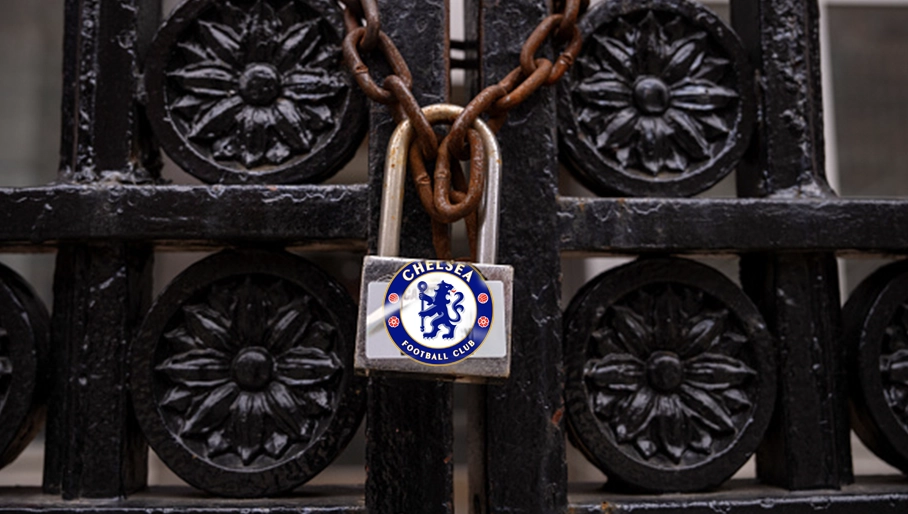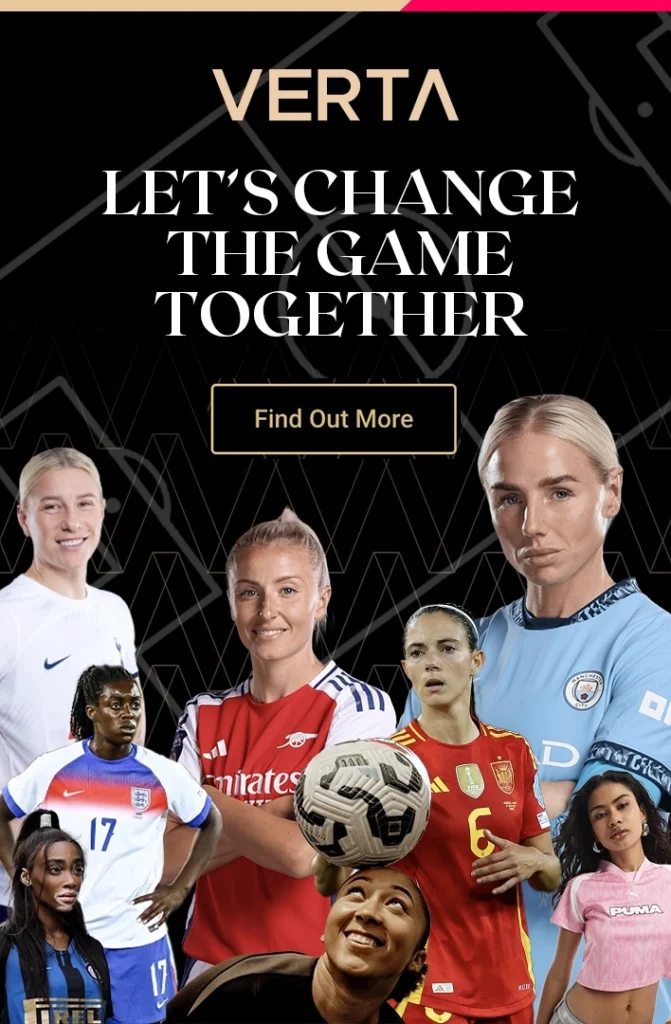Chelsea, Arsenal, City, and United dominate the WSL again – is this the natural order, or a structural flaw in women’s football?
In the seven seasons since the Women’s Super League turned professional, no team outside Chelsea, Arsenal, Manchester City, or Manchester United has ever finished in the top three. Not once. And as the end of the 2024/25 season approaches, it looks like déjà vu all over again.
It begs the question: is this just the natural evolution of professionalising the sport with early serious adopters reaping the benefits, or a red flag that women’s football is walking into the same competitive imbalance that dogs the men’s game?
League position by team since WSL launched
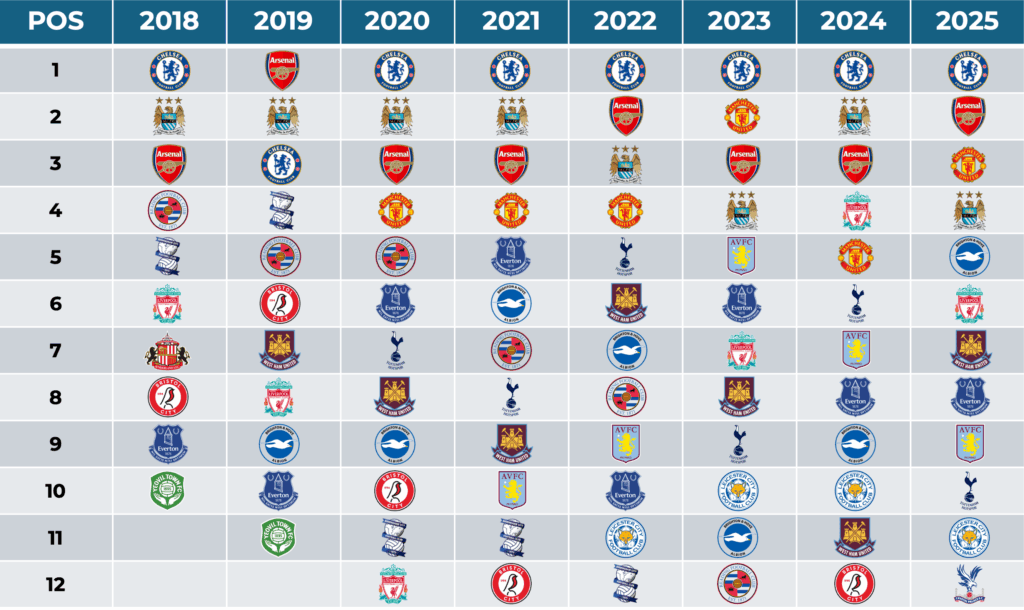
Is the WSL already in danger of becoming a bit predictable? 2025 positions accurate as of 6th May 2025.
Why It Matters Now
As women’s football explodes globally – breaking attendance records, signing landmark broadcast deals, and creating new icons – there’s real momentum. But momentum needs inclusivity, unpredictability, and a sense that anyone can dream. If the WSL becomes too predictable, the risk is stagnation, disillusionment, and a ceiling on the league’s broader appeal.
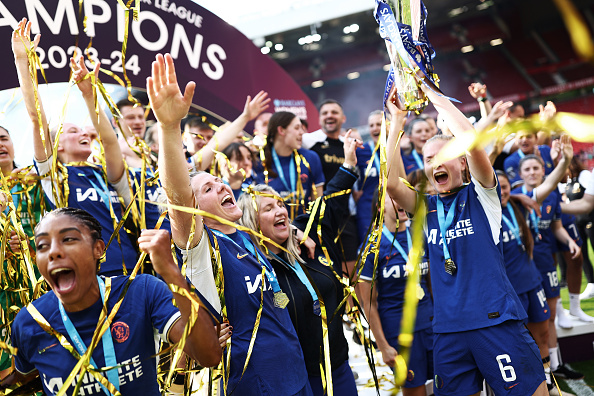
Why Is This Happening?
1. Investment Matters
Follow the money. Chelsea, Arsenal, City, and United have heavily invested in their women’s sides: elite facilities, bigger wage bills, top-tier coaching, and recruitment networks. The resources gap is massive. Clubs further down the league simply cannot match the financial muscle.
2. Men’s Club Infrastructure
The “Big Four” aren’t just any clubs – they are global brands in the men’s game too. They have existing training complexes, medical teams, marketing reach, and fanbases. That infrastructure shortcut can’t be understated.
3. Focus and Strategic Priorities
These clubs see women’s football as core to their brand future, not a side project. Look at Chelsea’s Emma Hayes era or City’s women’s program investments since 2012: there’s a long-term vision, not just short-term hype.
4. Is It Just Coincidence?
Not really. Talent follows opportunity. Top players want to compete for trophies, train at elite facilities, and play Champions League football. The concentration of quality is self-reinforcing.
Cultural and Emotional Relevance
In a world where women’s football is finally shaking free of old stereotypes, the WSL should represent possibility. Instead, if four teams dominate year after year, it risks sending a different message: that only the rich clubs win. It’s the same grim familiarity that’s turned many younger fans off the men’s Premier League.
Younger fans in particular value authenticity and fair competition. If the WSL fails to nurture a more open playing field, it could lose touch with its most important growth audience.
Perspective: A Fresh Take
This isn’t an attack on excellence. Greatness deserves celebration. What’s needed is systemic support and focus so that excellence can emerge from more places.
The WSL must think long-term:
- More equitable distribution of prize money.
- Salary floors and squad caps.
- Continued insistence that every WSL club meets minimum investment standards.
- Championing all clubs and their players no matter their standings.
And fans, too, have a role to play. Supporting your local side – even if they aren’t winning silverware – keeps the ecosystem healthy.
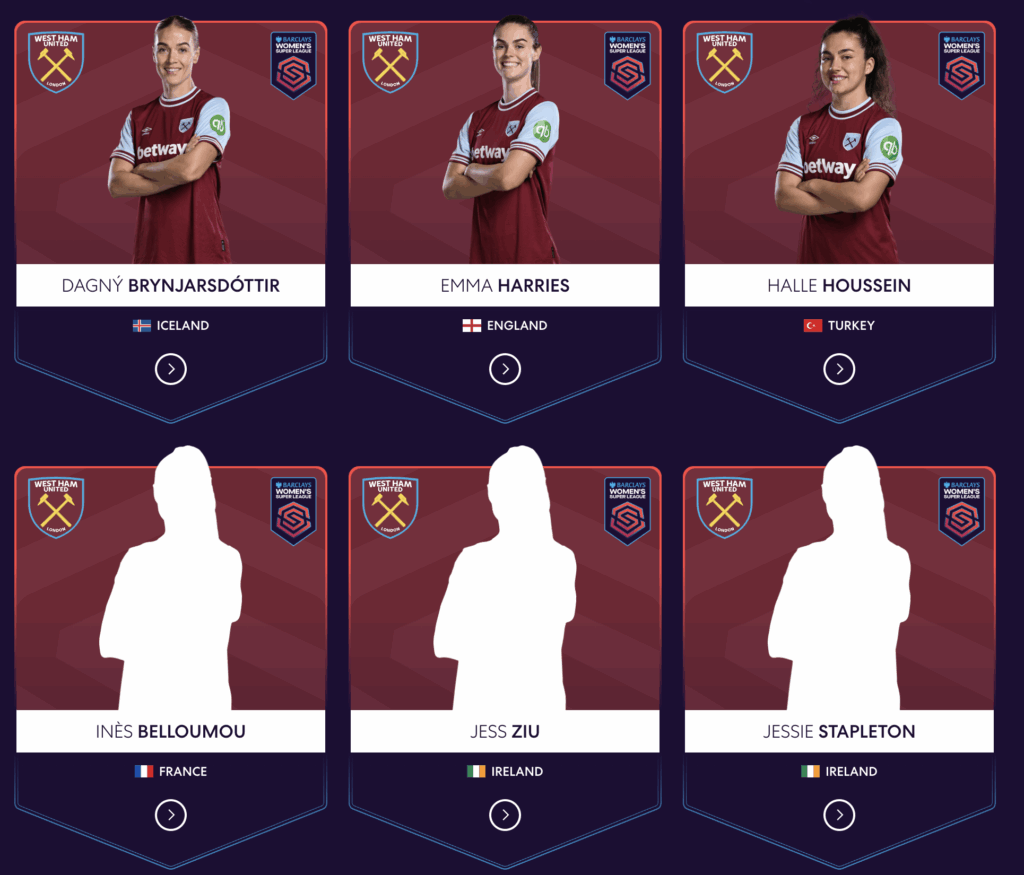
Some clubs on the official WSL website are missing player photos. Not good, WSL.
Conclusion
The dominance of Chelsea, Arsenal, City, and United in the Women’s Super League isn’t a fluke – it’s a feature of where investment and infrastructure meet ambition. But if the league wants to keep rising, it needs to ensure the ladder isn’t pulled up behind them.
Otherwise, the WSL risks becoming a castle with four kings – and not much of a kingdom.


